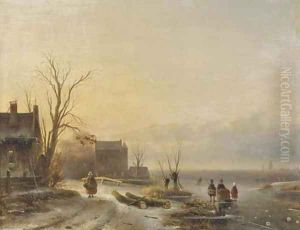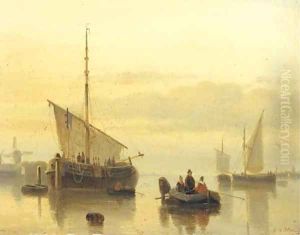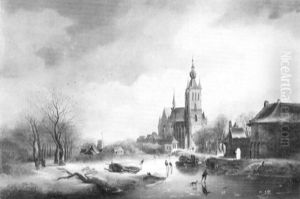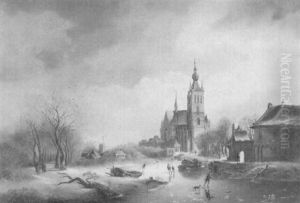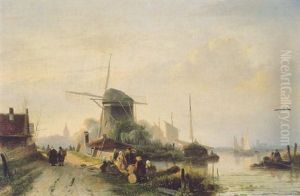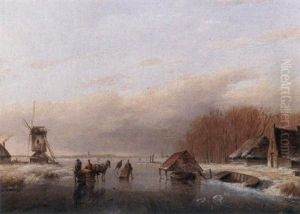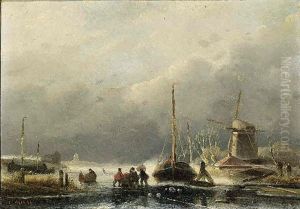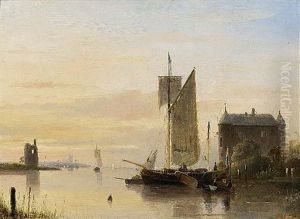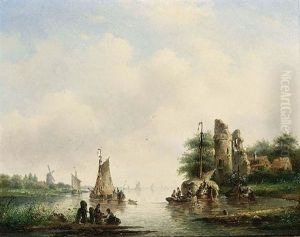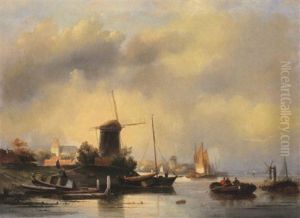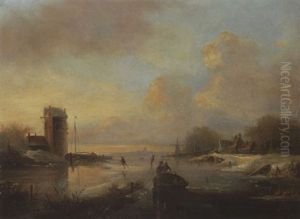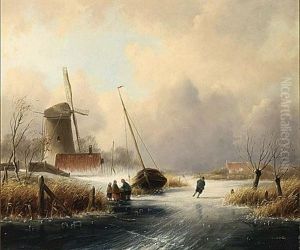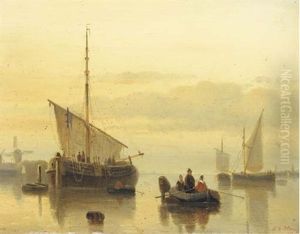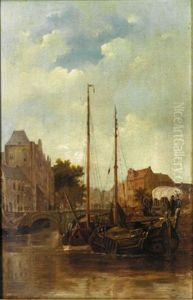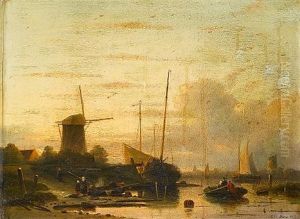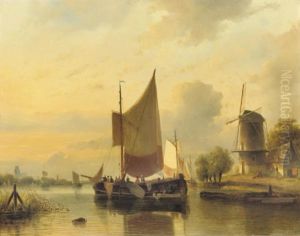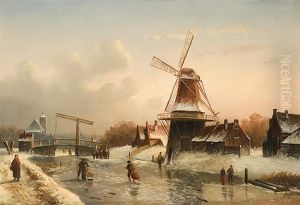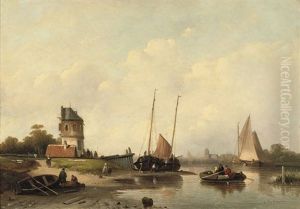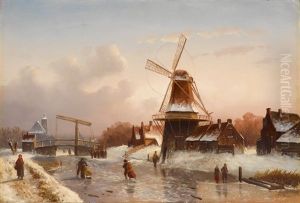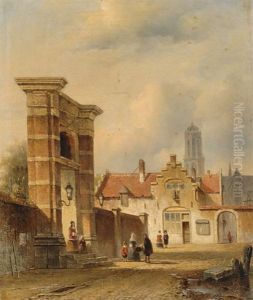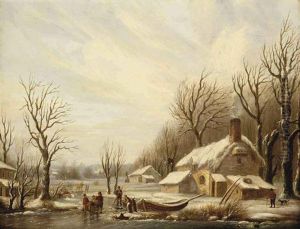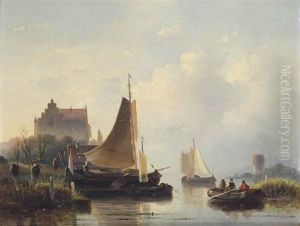Cornelis Petrus T' Hoen Paintings
Cornelis Petrus T' Hoen, born on August 8, 1745, in Rijswijk, Netherlands, was an influential Dutch printmaker, draftsman, and painter. His work is not widely known outside of specific art historical circles, but he made significant contributions to the Dutch art scene of his time. T' Hoen's artistic journey began under the guidance of his uncle, the painter and engraver Hendrik Schepper. Under Schepper's tutelage, T' Hoen developed his skills, particularly in the domain of engraving, which would become his primary medium.
Throughout his career, T' Hoen focused on a variety of subjects including landscapes, portraits, and historical scenes. His style was characteristic of the Dutch artistic traditions of the 18th century, which was a period of both adherence to and divergence from the grandeur of the Golden Age of Dutch art in the previous century. He contributed to the art world not only through his creations but also by influencing other artists and being involved in the cultural life of his time.
Cornelis Petrus T' Hoen's works were detailed and exhibited a mastery of the engraving technique. He was particularly adept at capturing the textures and light that characterize the Dutch landscape. Despite his skill, he did not achieve the same level of fame as some of his contemporaries. Nevertheless, T' Hoen's engravings and prints remain valuable for their historical significance and craftsmanship.
T' Hoen's death on May 1, 1828, marked the end of his contributions to the Dutch art world. While he may not be a household name today, his works are preserved in various art collections and museums, offering insight into the aesthetics and techniques of Dutch printmaking in the 18th and early 19th centuries. His legacy lives on through these works, which continue to be studied and appreciated by art historians and enthusiasts alike.
